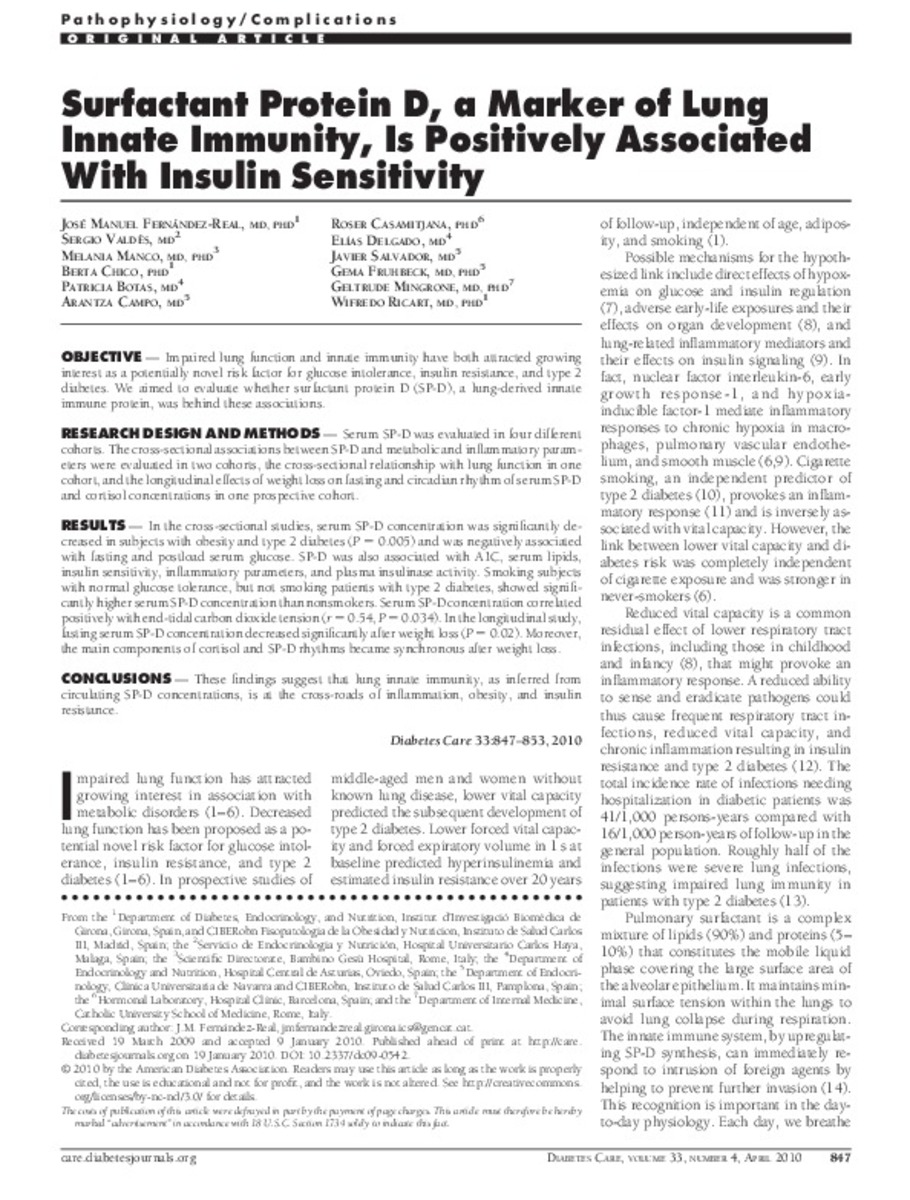Surfactant protein D, a marker of lung innate immunity, is positively associated with insulin sensitivity
Keywords:
Biological Markers/blood
Diabetes Mellitus, Type 2/blood
Insulin
Blood Glucose/analysis
Publisher:
American Diabetes Association
Citation:
Fernandez-Real JM, Valdes S, Manco M, Chico B, Botas P, Campo A, et al. Surfactant protein D, a marker of lung innate immunity, is positively associated with insulin sensitivity. Diabetes Care. 2010 Apr;33(4):847-53.
Statistics and impact
0 citas en

0 citas en

Items in Dadun are protected by copyright, with all rights reserved, unless otherwise indicated.








